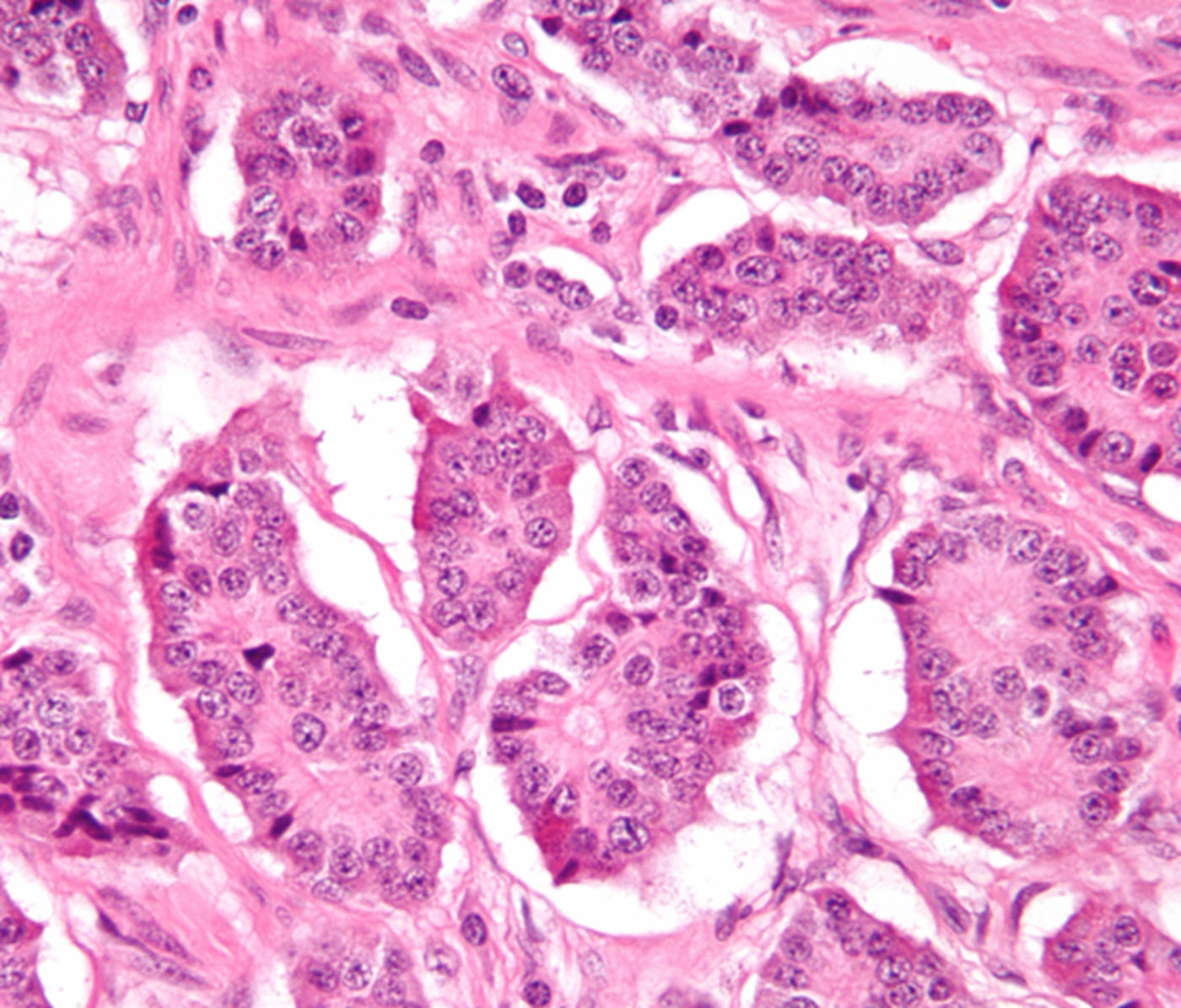Cancers can be named and catalogued in different ways. Originally, they were typically named and described after where they were found, such as lung cancer, brain cancer and blood cancer.
Eventually, researchers began to also divide cancers into different groups based on how the cancer cells looked under a microscope, as they found out that identical looking cancer cells can originate in many different parts of the body.
As cancer research progressed, we also learned how to group cancers based on the types of genetic alterations that are believed to be driving them. Certain mutations have been identified in various types of cancer, regardless of where in the body they first appeared, and knowing about these genetic alterations provide us with more information that simply knowing what the cells look like under microscope.
Cancers can also be described based on the type of cell that formed them. Below, you will find a few exampels of cancers that begin in specific types of cells.
Carcinomas are formed by epithelial cells
Carcinomas are formed by epithelial cells, which are cells that cover the inner and outer surfaces of the body. More specifically, carcinomas arises from cells originating in the endodermal, mesodermal or ectodermal germ layer during embryogenesis.
There are many types of epithelial cells, so carcinomas can be further divided into groups based on exactly which type of epithelial cells they are formed by.

Adenocarcinoma
This is a type of carcinoma formed by the kind of epithelial cells that produce fluids or mucus. Many cancers that originate in the colon, breast or prostate are of this type.
Basal cell carcinoma
Basal cell carcinoma begins in the lower (basal) layer of the epidermis. (Epidermis is the outer layer of skin.)
Squamous cell carcinoma
Squamous cells are epithelial cells located:
- Just beneath the outer surface of the skin
- Lining internal organs such as the lungs, kidneys, bladder, stomach and intestines
Transitional cell carcinoma
The transitional epithelium is a type of epithelial tissue consisting of many layers of epithelial cells. This tissue is found in several organs in the human body, including kidneys, bladder and uretra.
Melanomas are formed by cells that make melanin
Melanomas are formed by melanocytes, a type of cells that produce the pigment melanin. Most people are aware that you can get skin melanomas, but don’t know that this type of cancer can actually form in any pigmented tissue, e.g. in pigmented parts of the eyes.
Leukemias are formed in the blood-forming tissue of the bone marrow
All cancers that originate in the blood-forming tissue of the bone marrow are called leukemia and are unlikely to form solid tumours. There are several types of leukemia, such as lymphoblastic leukemia and myeloid leukemia.
Leukemia will cause the production of a huge number of abnormal white blood cells, which builds up in the blood and bone marrow where they crowd out the normal blood cells. When there aren’t enough normal blood cells around, it becomes difficult for the body to transport enough oxygen (red blood cells), control bleeding (platelets) and fight infections (normal white blood cells).
Neuroendocrine cancers are formed by certain cells that release hormones into the blood
Neuroendocrine cancers originate in a type of cells that release hormones into the blood after being prompted by the nervous system. When these cells have turned into cancer cells, they release abnormally high amounts of hormones and this can cause a wide range of symptoms in the body.

Carcinoid tumours
This is a type of nueroendocrine cancer. The gastrointestinal system is especially prone to develop this type of cancer, particularly in the rectum and small intestine.
Carcinoid tumours tend to be slow-growing, but they can eventually spread to other parts of the body, including the liver.
Carcinoid syndrom occurs when carcinoid tumours secrete substances such as serotonin and prostaglandins.
Lymphomas are formed by lymphocytes
Lymphomas are formed by lymphocytes, a type of white blood cell. Lymphocytes are an important part of the immune system.
In lymphoma, abnormal lymphocytes build up, especially in the lymph nodes and lymph vessels.
One well-known type of lymphoma is Hodkin lymphoma, where normal B-cells (a type of lymphocyte) turns into Reed-Sternbeg cells.
Multiple myelomas are formed by plasma cells
Multiple myelomas is a cancer formed by abnormal plasma cells. (Normal plasma cells are a part of the immune system.) In this type of cancer, normal plasma cells turn into myeloma cells which build up in the bone marrow. Tumours can form in the bones throughout the body.
Sarcomas are formed by mesenchymal (connective tissue) cells
Mesenchymal cells are found in connective tissue and conective tissue is present in many different parts of the body, which means that sarcomas can arise in many different parts of the body. Connective tissue is a broad term that includes anything from bone and cartilage to vascular tissue, fat tissue and hematopoietic tissue.
Soft tissue sarcoma
Soft tissue sarcoma forms in soft tissue, such as muscles, tendons, nerves, blood vessels, lymph vessels, fat, and the tissue around joints.
Osteosarcoma
This is the most common type of bone cancer.
Astrocytomas are formed by astrocyte cells
Astrocytomas is a type of brain cancer formed by astrocytes, a type of star-shaped glial cells found in the cerebrum where they help keep nerve cells healthy and functional.
Astrocytomas is unlikely to spread outside the brain and spinal cord.
This article was last updated on: November 18, 2019
